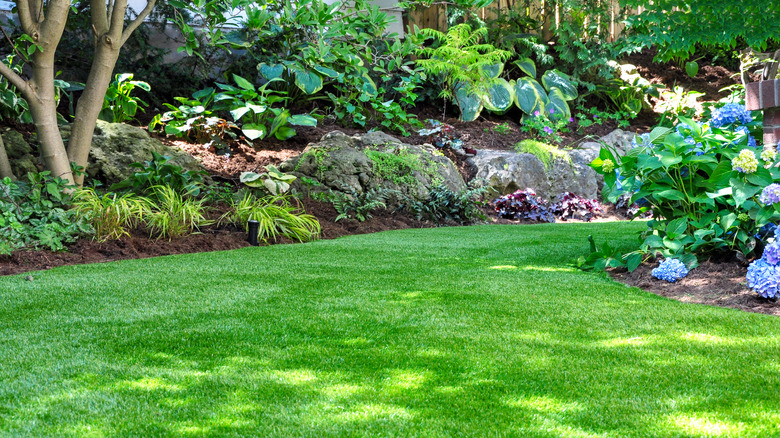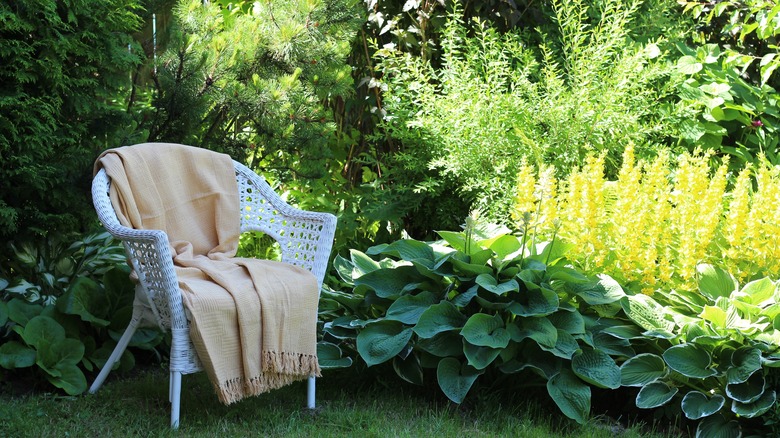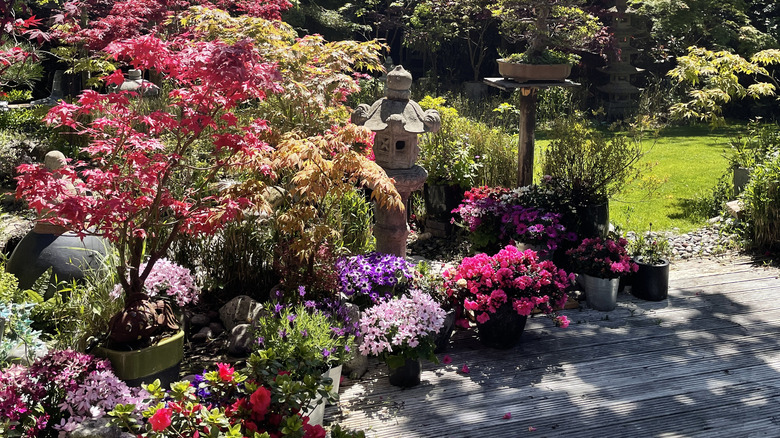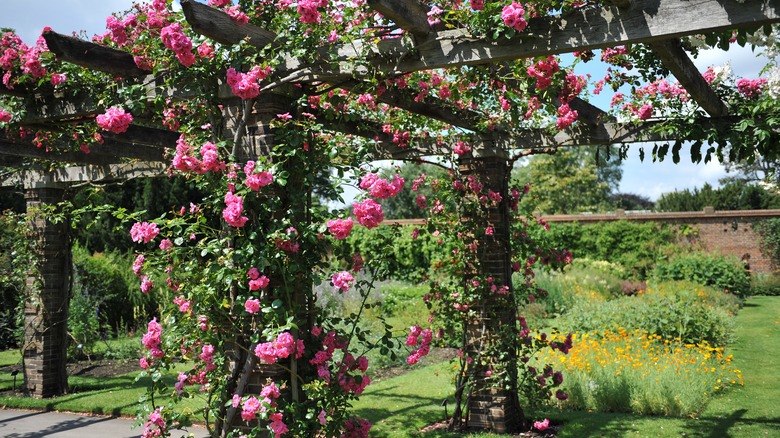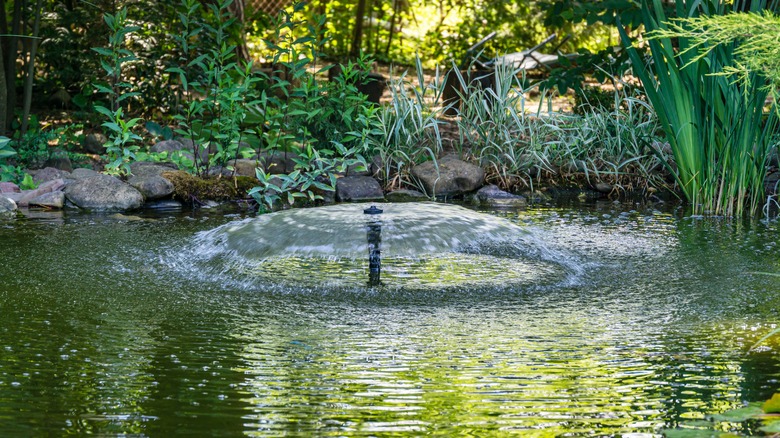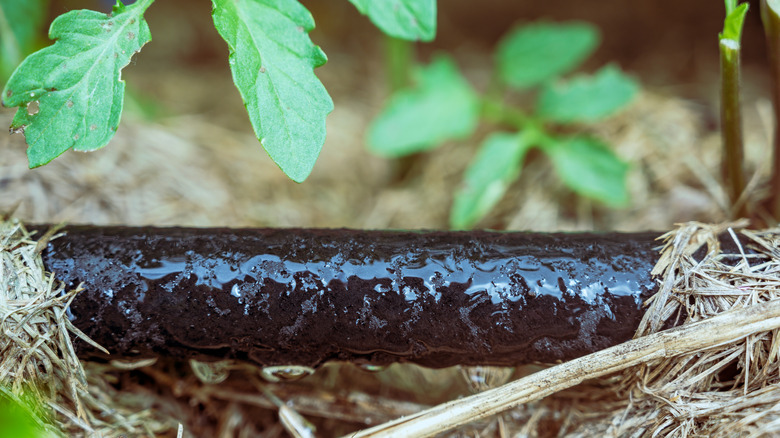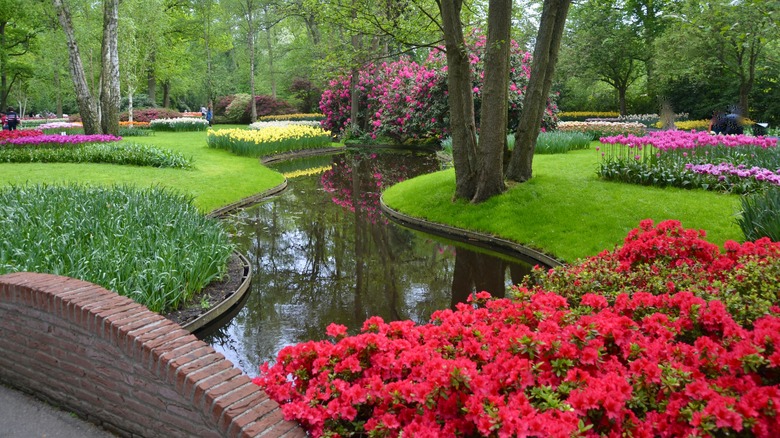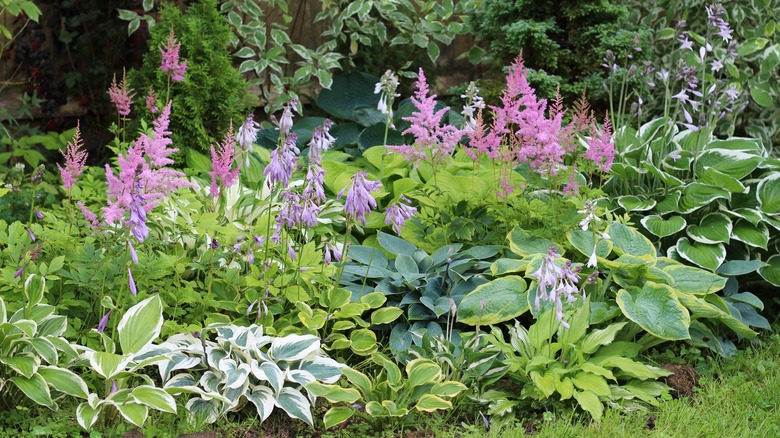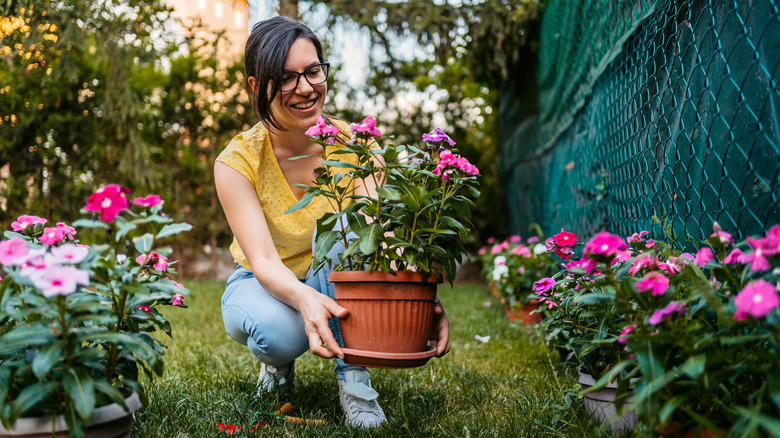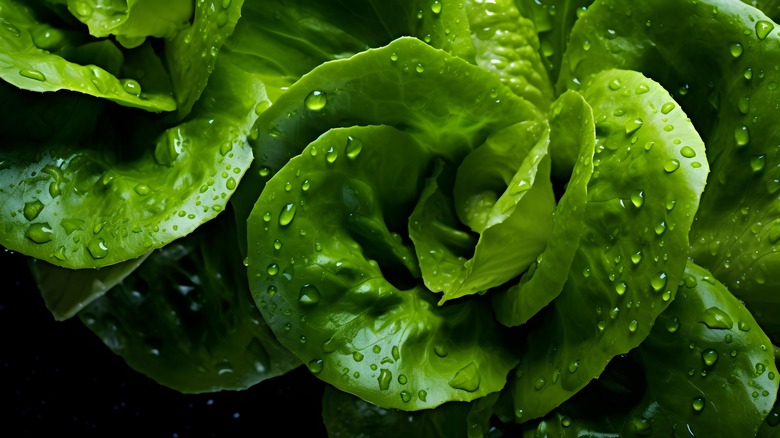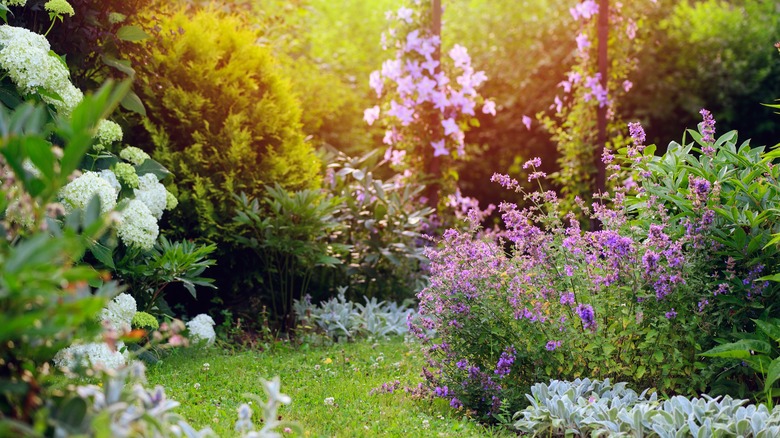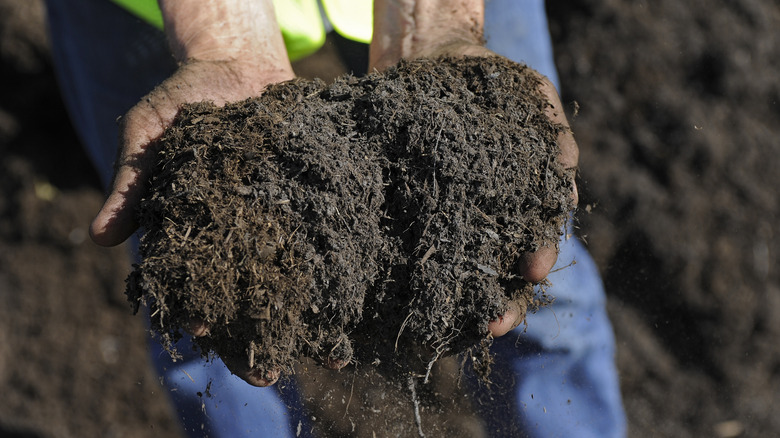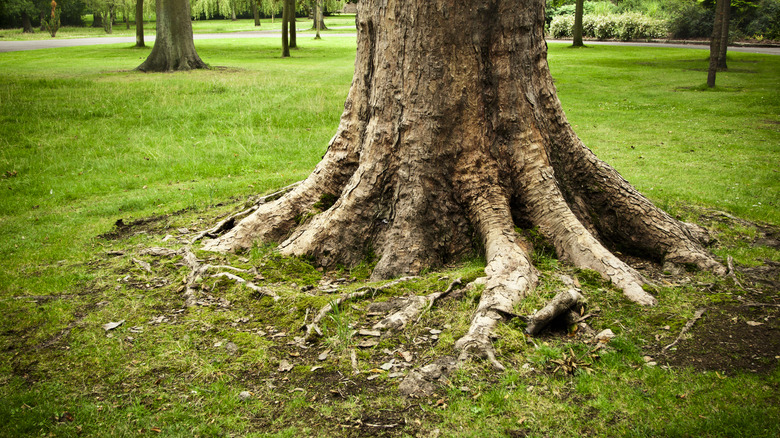Essential Tips For Growing A Flourishing Shade Garden (& Common Errors To Avoid)
On a hot summer day, a shade garden invites you to relax in its cool and peaceful environment. An array of shade-loving plants offer beautiful colors and graceful textures to engage the eye and the imagination. In a shade garden, you can successfully nurture a mix of trees, shrubbery, perennials, and annuals that harmonize in a satisfying, cohesive design.
In this article, we've garnered nine tips for establishing and maintaining a lovely shade garden, along with three potential errors to avoid. Read on to learn how to analyze the type of shade you have and how to choose the right plants that will thrive in your garden's conditions. We've included lists of suggested shrubbery as well as perennial and annual plants that can add pleasing colors, shapes, and textures to your shade garden. Additionally, we've collected tips about amending your soil and watering properly so that your shade garden will truly flourish.
Determine how many hours of sun and shade your planting area gets on a daily basis
To establish a beautiful shade garden, knowing exactly how much sun and shade the planting area receives daily is essential. Spend time in your garden, observing the amount of sunlight at hourly intervals throughout the day. To make this determination, savvy gardeners create a sun map of their gardens during mid-summer when the sun's angle is at its strongest position.
The first step is to determine the direction your garden faces. Stand with your back to the house and use a compass or smartphone app to decide whether your garden faces north, south, east, or west. South-facing gardens get the most sunlight throughout the day, while north-facing gardens are consistently shady. East-facing gardens receive the gentle sunlight of morning along with afternoon shade, but west-facing gardens receive shade in the morning, followed by bright, direct sunlight in the afternoon. Next, sketch your garden on paper and make four copies, observing your garden at 9 a.m., 12 p.m., 3 p.m., and 6 p.m. Use a pencil or highlighter to mark the shaded areas on your garden maps, noting the time of day. Put the four sketches together for an overall picture of sunlight and shade in your garden. If sketching isn't your thing, you can take a picture of your garden at hourly intervals on a sunny day and study the photos to observe the number of hours that each area receives sunlight or shade.
Understand the type of shade your planting area gets
While browsing through the plants at your local nursery, you might notice tags with terms like "light shade," "partial shade," "full shade," or "dense shade." What do these terms really mean? According to the horticulture experts at Kansas State University, plants requiring light shade will thrive with three to five hours of sunlight daily. Those labeled as partial-shade plants will flourish with two hours of sunlight or at least a half-day of shade regularly. Full-shade plants are happiest when they receive an hour or two of direct sunlight daily. Only a few plants like dense shade, as they don't get any direct sunlight and enjoy only a bit of indirect light.
Choose your plants after analyzing the types of shade observed in your garden. When you map your garden for sun exposure, you'll notice that some planting areas are shaded in the morning while others get shade in the afternoon. Keep in mind that morning shade tends to be cooler and more moist than afternoon shade. Additionally, there are differences between the dappled shade that occurs when rays of sunlight are filtered through the leaves of trees and the deep shade provided by buildings or walls blocking the light. Large shrubbery and young trees offer light shade as they screen out the sun's rays without blocking them. By contrast, evergreen trees and dense tree canopies offer greater light-blocking capacity to provide full or deep shade.
Create shade where it's needed to accommodate shade-loving plants
When you survey the plethora of shade-loving plants available for your garden, you might decide that you need more shady spots where you can nurture an array of lovely plants. While some shade is offered by your house, outbuildings, walls, fences, and trees, you may want to add more options for screening out the sun's rays.
Organic sources of shade include large shrubbery and trees, but it takes a few years for these plants to grow big enough to offer significant shade. Consider fast-growing shade trees like the American sycamore, hybrid poplar, and red maple to provide shade after only a few seasons. Similarly, you might accommodate your smaller plants with the shade from fast-growing shrubs like easy-to-care-for hydrangea. Alternatively, you can get shade from fast-growing vines such as grape and cucumber, training them upward on a pergola or a network of overhead wires. There are always artificial options for adding shade to the garden, including patio umbrellas (like this classic style from Lowes) and sun shade sails (available from Home Depot and other retailers).
Select the right plants for full shade or partial shade
When shopping for shade-loving plants, it's important to distinguish between those that thrive in full shade and those that enjoy partial shade. Defined as somewhere receiving only one or two hours of direct sunlight per day, an area of full shade may be found under a dense canopy of tree limbs and leaves. If full-shade plants get too much sun, their lovely colors will fade, and their leaves may be scorched. Plants that flourish in full shade put out broad, flat, thin leaves to collect the scant, indirect light, and this feature makes them susceptible to damage from direct rays of the sun. By contrast, plants that like partial shade are more tolerant of direct sunlight and grow happily under trees that provide only 50% canopy closure.
In a full-shade area of your garden, you might plant hostas, ferns, astilbe, and coleuses. Place these plants where you have ample overhead coverage from trees, vines, or other structures that provide shade throughout the day. In a partially shaded area, try growing camellias, bleeding hearts, hellebores, primroses, lungworts, and foxgloves. These plants enjoy the dappled sunlight that filters through the branches of trees and shrubbery where the limbs are not densely compacted.
Water your shade-loving plants consistently
Providing the optimum amount of water on the proper schedule by the best delivery method is an essential issue for the success of any garden. Consider the microclimate of the planting area and the water needs of the plants that grow there. A shade garden, by definition, occupies a sheltered territory in your landscape. With elements that block direct sunlight and wind, the shade garden stays moist after rainfall or watering. When slow evaporation causes their leaves to remain wet, plants develop problems with the growth of mildew and other types of fungi. On the other hand, shade-loving plants growing under large trees may suffer from overly dry conditions due to the competition from tree roots for the available water. Additionally, a dense canopy of tree limbs might prevent rainwater from reaching the ground, leaving the shade plants thirsty.
The best watering method for shade gardens is to water the soil, not the leaves of the plants. Your goal should be to keep the soil consistently moist but not soggy. Shaded soil requires less frequent watering than sun-drenched planting beds. A drip irrigation system is ideal for a shade garden, as it directs the water to the soil and the plants' roots. The foliage and flowers stay dry, resisting the growth of fungi.
Plant shade-loving shrubbery to provide a background of form and texture in the garden
In an area shaded by trees, a fence, or a wall, the addition of shade-loving shrubbery creates a scenic backdrop for plants that feature contrasting foliage and flowers. In addition to their visual appeal, large shrubs provide shade for the smaller plants. When you design the shade garden, think of the shrubbery as the scaffolding on which you'll layer an array of plants to create a beautiful garden scene. Consider the shapes, foliage colors, textures, and flowers of various shrubs that thrive in the shade. Remember that while shrubbery plants may start out small, they will grow to immense proportions. For this reason, it's important to space the shrubs according to the instructions that come with the plants, allowing plenty of room for growth.
In a shade garden, yews, witch-hazels, mountain laurels, and camellias will grow to be 15 to 20 feet tall and as much as 12 to 15 feet wide. Plant these shrubs where they can take up large amounts of space without crowding the other plants. Smaller shade-loving shrubbery plants include Virginia sweetspires, summersweets, and hydrangeas. When full-grown, these shrubs average around 8 feet tall and 6 to 8 feet wide.
Anchor your garden design with perennials that flourish in the shade
For beautiful results, fill your garden with shade-tolerant, herbaceous, perennial plants that offer an array of colors and textures in their flowers and foliage. Perennials die back during the winter and come out again every spring, offering an attractive display year after year. Herbaceous perennials feature fleshy stems and leaves, contrasting with the woody branches of shrubbery. They're smaller and more delicate than shrubs, but they are available in a huge variety of sizes, shapes, and colors.
In full shade, you'll find lungworts, bleeding hearts, and primroses putting out lovely flowers in various hues. If flowers are high on your wishlist, consider perennials that thrive in partial shade, especially in locations that get morning sun with shady afternoons. These plants include columbines, daffodils, bergenia, astilbe, agapanthuses, and hellebores. Some perennials that flourish in the shade produce attractive leaves, making a show of texture, shape, and color without the help of blooming flowers. Look to variegated hostas, coral bells, coleuses, and ferns for vivid, eye-catching foliage in the shade garden. Additionally, there are several options for ground covers that fill in spots that are too shady for a typical lawn. The shade-loving ground covers include pachysandras and sweet woodruffs.
Position containers of brightly colored annuals throughout your shade garden
Unlike the perennials that come back every year, annual plants last for one season and then perish in the cold winter temperatures. During their short life cycle, annuals make a big show of rapid growth and gorgeous, blooming flowers. For this reason, gardeners frequently place these plants in pots throughout the garden. On porches and covered patios, under trees, and tucked under larger shrubs and perennials, the annuals embellish the shade garden with bright bursts of color. As an added bonus, the potted flowering plants can be moved around the outdoor space to change up the scene whenever you're ready for a quick garden makeover.
Caladium and coleus are annuals with variegated leaves that display beautiful colors. They grow to be 1 to 3 feet tall and wide. Agapanthus makes a bright show of purplish-blue flowers atop stems that reach 3 to 4 feet tall and up to 2 feet wide. Smaller flowering annuals for the shade garden include Torenias (aka wishbone flowers).
Keep in mind that annual plants may be hardy enough to last through the mild winters in southern agricultural zones. For example, annual vinca is a perennial in USDA Plant Hardiness Zones 9 through 11. To protect the potted annuals during mild winters, tuck them under the edges of larger perennials or shrubbery.
Mix in shade-tolerant vegetable plants and herbs for an edible harvest from your shade garden
You might not think of a shade garden as a place where you can grow herbs and vegetables, but some varieties thrive in partial shade. Focusing on these plants allows you to reap an edible harvest from the shady areas in your landscape. While they may not grow well in full or dense shade, many vegetables like dappled shade with sunlight filtering through tree branches, as well as locations that get only three to six hours of direct sun per day. Partial shade prolongs the growing period for many vegetables and herbs because full sun exposure for eight hours a day causes them to bolt or go to seed too quickly.
Leafy vegetables such as lettuce, kale, and arugula like a few hours of morning sun followed by afternoon shade. On the other hand, climbing vegetables like cucumbers and pole beans enjoy a bit of shade in the morning with full sun in the afternoon. In a shady area, you can grow collards, Swiss chard, endive, and spinach for salads and cooking. Brassicas, including broccoli, cauliflower, and Brussels sprouts, may be counted among the vegetables that enjoy partial shade. As an added bonus to your shade garden, you can tuck in a variety of shade-loving herbs using pots and small spaces in your planting beds. A partially shaded growing environment is ideal for mint, parsley, bay laurel, chives, and lemon balm.
Don't skip the planning stage when you design a shade garden
It's fun to browse the plants at your local nursery, grab a few tagged for shady growing conditions, and pop them into the ground under the trees and overhanging eaves in your garden. However, this willy-nilly approach to establishing a shade garden will not likely result in a pleasing design that holds up over time. Instead, take the time to make plans for a cohesive shade-garden design that flourishes as the plants mature.
Spend time in the space to experience the light and shade patterns throughout the day, developing a sun map that you draw on paper. Then, shop for the right plants to occupy each area of the garden, including partially, fully, and deeply shaded areas. Some gardeners advocate paring down your selection of plants to only four different species and planting them in masses. This approach yields a unified appearance that delivers significant visual impact. Play with colors and textures, keeping in mind that many shade-loving plants boast vibrantly colored leaves.
For this reason, you don't need to depend on blooming flowers to brighten up the space. Determine the vantage point from which you'll view the shade garden, and position the plants in layered patterns to provide the most interesting scene. Sizes should gradually diminish as you move toward the front of the garden, with low-to-the-ground plants lining the edges of the planting area.
Don't forget to prepare your soil properly before planting in the shade
Before you start digging holes and positioning those beautiful, shade-loving plants, it's crucial to amend your soil. It would be difficult to overstate the importance of soil in any garden, and the shady plot is no exception to the rule. Plants that thrive in shady conditions are the ones that evolved over thousands of years under the shade of deciduous and evergreen trees in forests. They've grown accustomed to feeding off the nutrients in the soil of the forest floor. As a result, the shade-lovers prefer soil that is full of humus, a bi-product of decaying organic matter from trees, plants, and animals. To mimic that rich soil of the forest, amend your shade-garden soil to be light and loamy, full of organic material, and well-draining.
Add 3 to 6 inches of organic matter in the form of compost to amend the soil in your shade garden. You want the soil to be light and fluffy, not easily compacted. If a handful of soil compacts into a tight ball when you squeeze it, you'll know it contains too much clay. In this case, you'll need to add peat moss or coconut coir to your soil, working it in with the existing soil. After planting your shade garden, apply 3 to 4 inches of mulch around the plants. It not only holds moisture to prevent run-off around your plants but also adds a finished look to the garden.
When your plant a garden under the shade of trees, avoid damaging the tree roots
In many shade gardens, the low-light conditions are produced by the overhead canopy of tree branches and leaves. That means tree roots are exposed, and they consume the moisture and nutrients in the soil. This makes it difficult to create a shade garden that truly flourishes, but you can take steps to make your plants and trees compatible.
Some tree roots run deep, but many roots grow only a few inches below the soil surface. Keep in mind that the critical root zone can extend two to four times the size of the tree's overhead canopy. Don't cut through the tree roots when planting a shade garden, and avoid scraping the roots with a shovel or spade. Don't add more than 2 to 3 inches of compost or topsoil within the critical root zone of a tree, as a thicker deposit of organic matter can impede the tree's uptake of oxygen, water, and nutrients. If you want to incorporate shade-loving plants at the base of a tree, choose plugs, bulbs, or 4-inch pots of a shade-loving ground cover. You can safely plant these small-sized perennials under a tree without damaging the roots.
